by Dave Asprey
by Dave Asprey
[tldr]
[/tldr]
I’ve tried every diet known to man, from raw vegan to strictly meat, eggs, and butter. At the time, I was fat, sick, and slow, and I wanted to find the magic pill to feeling human again.
After a lot of frustrating trial-and-error, I can now say without a shadow of a doubt that a low-inflammation ketogenic diet like the Bulletproof Diet is a powerful way to shed body fat and dial in your brain power.
Getting into ketosis with diet alone isn’t fun. You have a period of a few days to two weeks when your body clamors for carbs and you feel like crap. To get through that period and then to amplify results once in ketosis, people have been experimenting with exogenous ketones — ketone supplements.
Keep reading to find out the difference between ketone esters and ketone salts, and the third exogenous ketone option that will get you into ketosis faster.
 Ketones, or ketone bodies, are chemicals that your liver makes when glucose (sugar) and glycogen (your body’s back-up carbohydrate stores) aren’t available for energy. You can read all about ketones here.
Ketones, or ketone bodies, are chemicals that your liver makes when glucose (sugar) and glycogen (your body’s back-up carbohydrate stores) aren’t available for energy. You can read all about ketones here.
Your liver starts making ketones for two main reasons. If you’re diabetic, you make ketones when you don’t have enough insulin to get energy out of the glucose in your bloodstream. When ketones climb too high, diabetics go into ketoacidosis, which can be life-threatening.
For everyone else, you start making ketones when you:
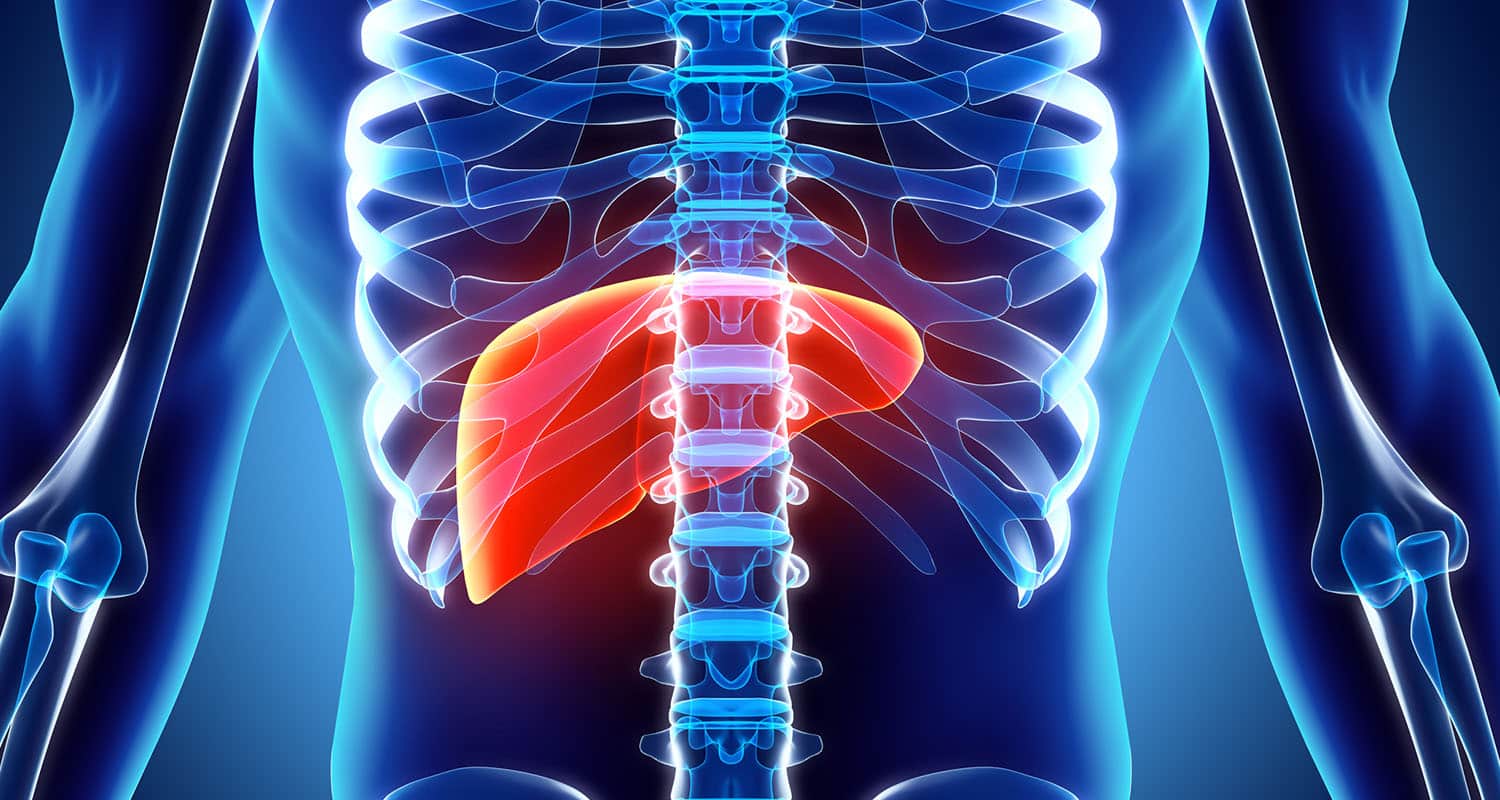 Once you cut carbs or you’re over the hunger hump of a fast, your body starts making three types of ketone bodies: acetoacetate, beta-hydroxybutyrate, and acetone. How many of each type of ketone you make depends on how long you’ve been restricting carbs or fasting.
Once you cut carbs or you’re over the hunger hump of a fast, your body starts making three types of ketone bodies: acetoacetate, beta-hydroxybutyrate, and acetone. How many of each type of ketone you make depends on how long you’ve been restricting carbs or fasting.
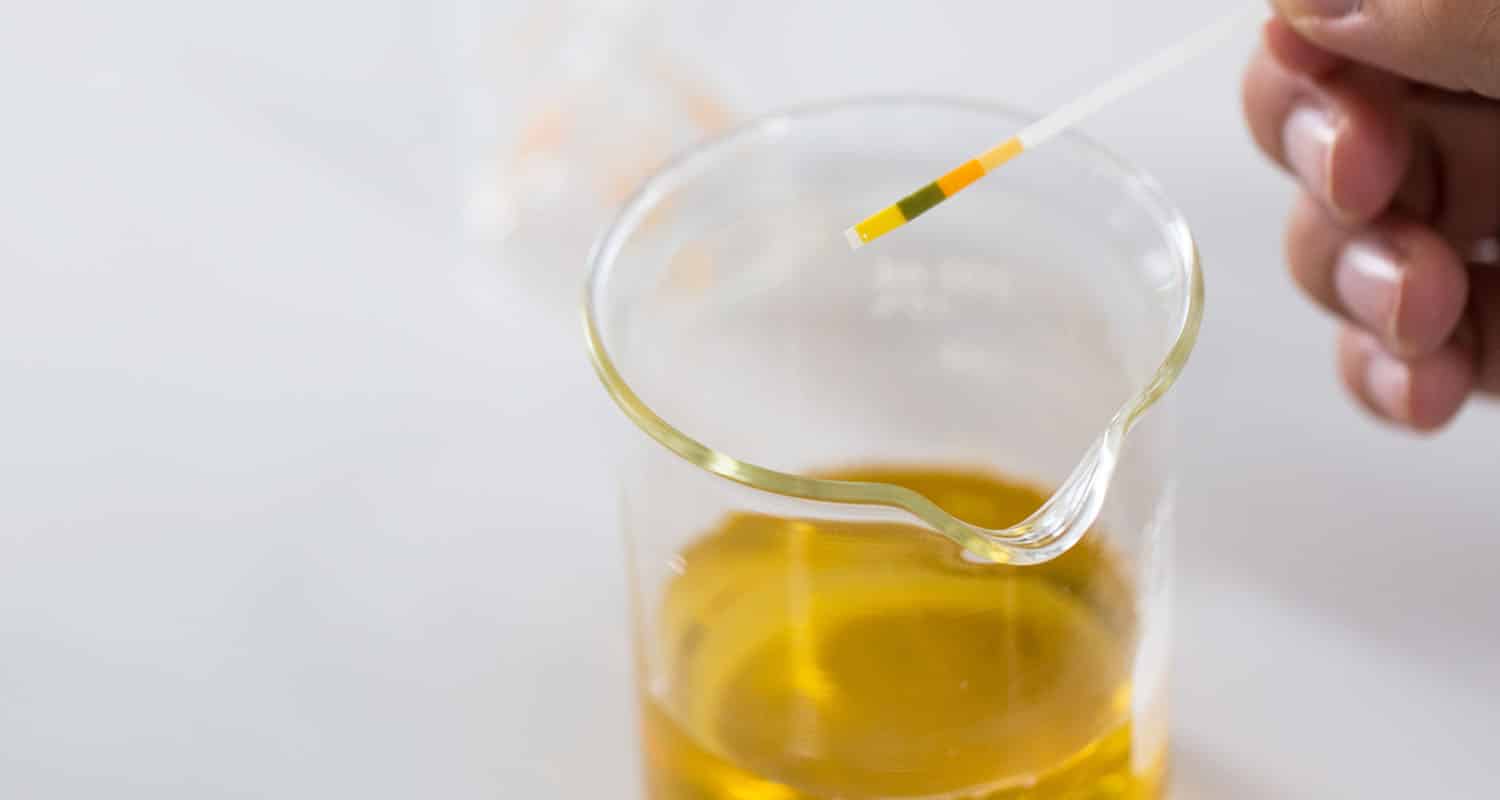 When your body gets the signal that you’re low on carbs and it’s time to break down fat for energy, acetoacetate is the first type of ketone body your body releases. When you first start, you have more acetoacetate than the other types of ketones, and as you continue, your beta-hydroxybutyrate levels climb until you’re producing all three in steady, sustainable proportions.[ref url=”https://www.ncbi.nlm.nih.gov/pubmed/16848698″]
When your body gets the signal that you’re low on carbs and it’s time to break down fat for energy, acetoacetate is the first type of ketone body your body releases. When you first start, you have more acetoacetate than the other types of ketones, and as you continue, your beta-hydroxybutyrate levels climb until you’re producing all three in steady, sustainable proportions.[ref url=”https://www.ncbi.nlm.nih.gov/pubmed/16848698″]
When you urine test your ketone levels, you’re measuring AcAc.
In your liver, two acetyl CoA molecules (think delivery truck molecules for energy packages), will hook up to make one acetoacetate ketone body. Rinse and repeat, until your hunger quiets down and you feel your energy shoot through the roof.
From there, acetoacetate will either:
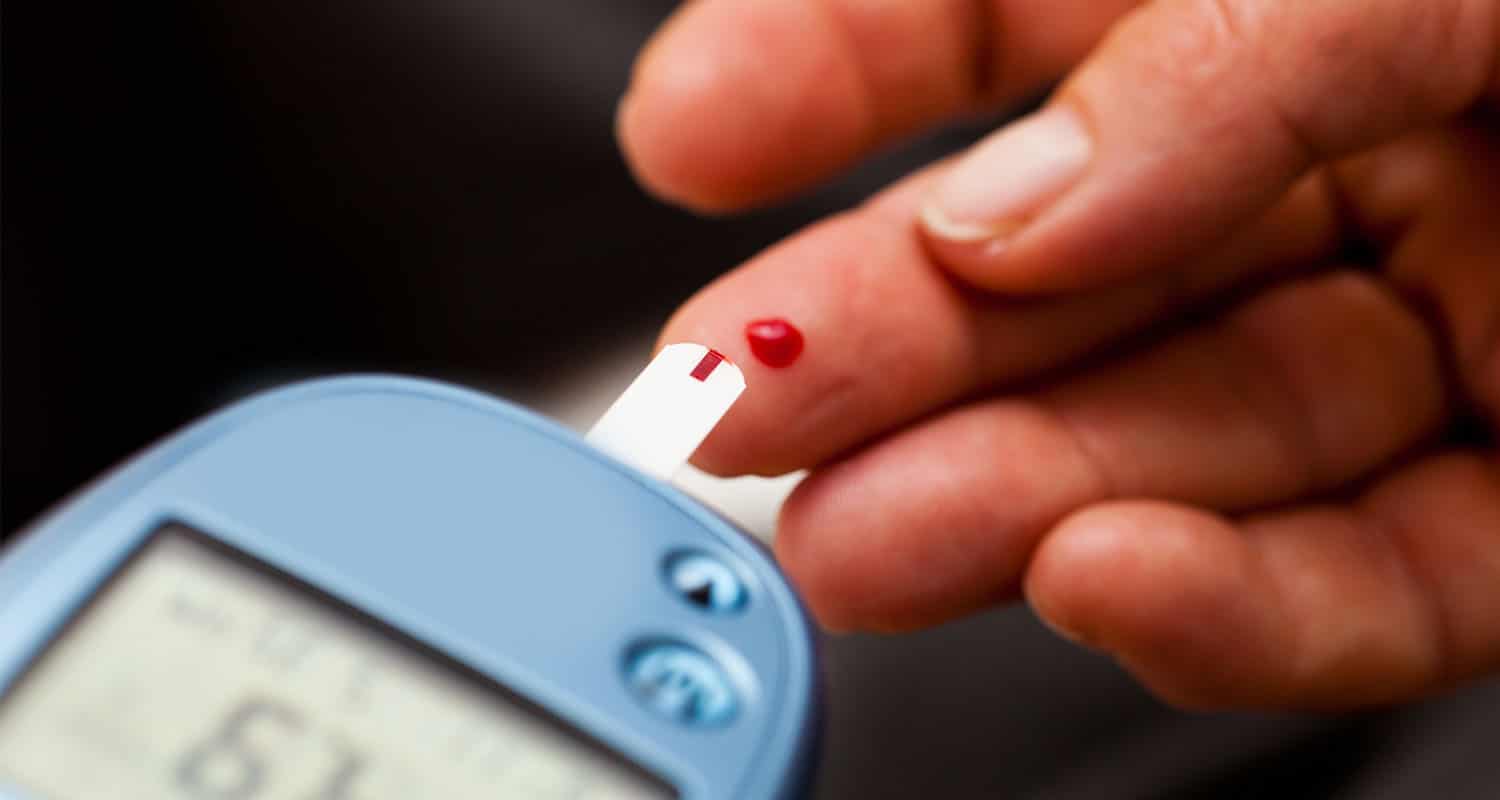 Beta-hydroxybutyrate (BHB) is the good stuff. It packs the highest energy potential of the three ketone types, and your body really starts pumping out BHB during an extended fast or after the first few weeks on a ketogenic diet.[ref url=”https://www.ncbi.nlm.nih.gov/pubmed/16848698″]
Beta-hydroxybutyrate (BHB) is the good stuff. It packs the highest energy potential of the three ketone types, and your body really starts pumping out BHB during an extended fast or after the first few weeks on a ketogenic diet.[ref url=”https://www.ncbi.nlm.nih.gov/pubmed/16848698″]
Some brands of urine test strips claim they’re measuring BHB, but they’re actually using your AcAc levels to approximate your BHB levels. Test strips don’t detect BHB at all, though, so it’s not an exact indicator. Since BHB is #ketogoals, get yourself a blood keto meter and test the real thing.
 Acetone is what you get when BHB or AcAc break down, and it’s the same acetone that goes into nail polish remover. Your body will use it for energy, but only if there’s an immediate energy need. It breaks down quickly and your body kicks it out fast. Acetone is the reason some people notice “keto breath,” a metallic taste that some people experience during the first couple of weeks on a ketogenic diet. That’s a sign that your body is releasing ketones, and you eliminate it through sweat, urine, and by exhaling.
Acetone is what you get when BHB or AcAc break down, and it’s the same acetone that goes into nail polish remover. Your body will use it for energy, but only if there’s an immediate energy need. It breaks down quickly and your body kicks it out fast. Acetone is the reason some people notice “keto breath,” a metallic taste that some people experience during the first couple of weeks on a ketogenic diet. That’s a sign that your body is releasing ketones, and you eliminate it through sweat, urine, and by exhaling.
When you measure ketones using a ketone breath analyzer, you’re detecting acetone. Again, the goal is BHB, and acetone is a proxy measure for BHB.
 Ketones from a bottle or capsule are known as exogenous ketones — ketones from an outside source.
Ketones from a bottle or capsule are known as exogenous ketones — ketones from an outside source.
Whether you want to sidestep the misery of the keto flu, take a shortcut to all of the amazing benefits of ketosis, or you want to ramp up the results you’ve seen already, you’ve started looking at hacks for getting your ketone levels up faster than you would on your own. So, do you supplement? Here are your options, and keep reading to find out why Brain Octane Oil is the safest and most effective exogenous ketone you’ll find anywhere.
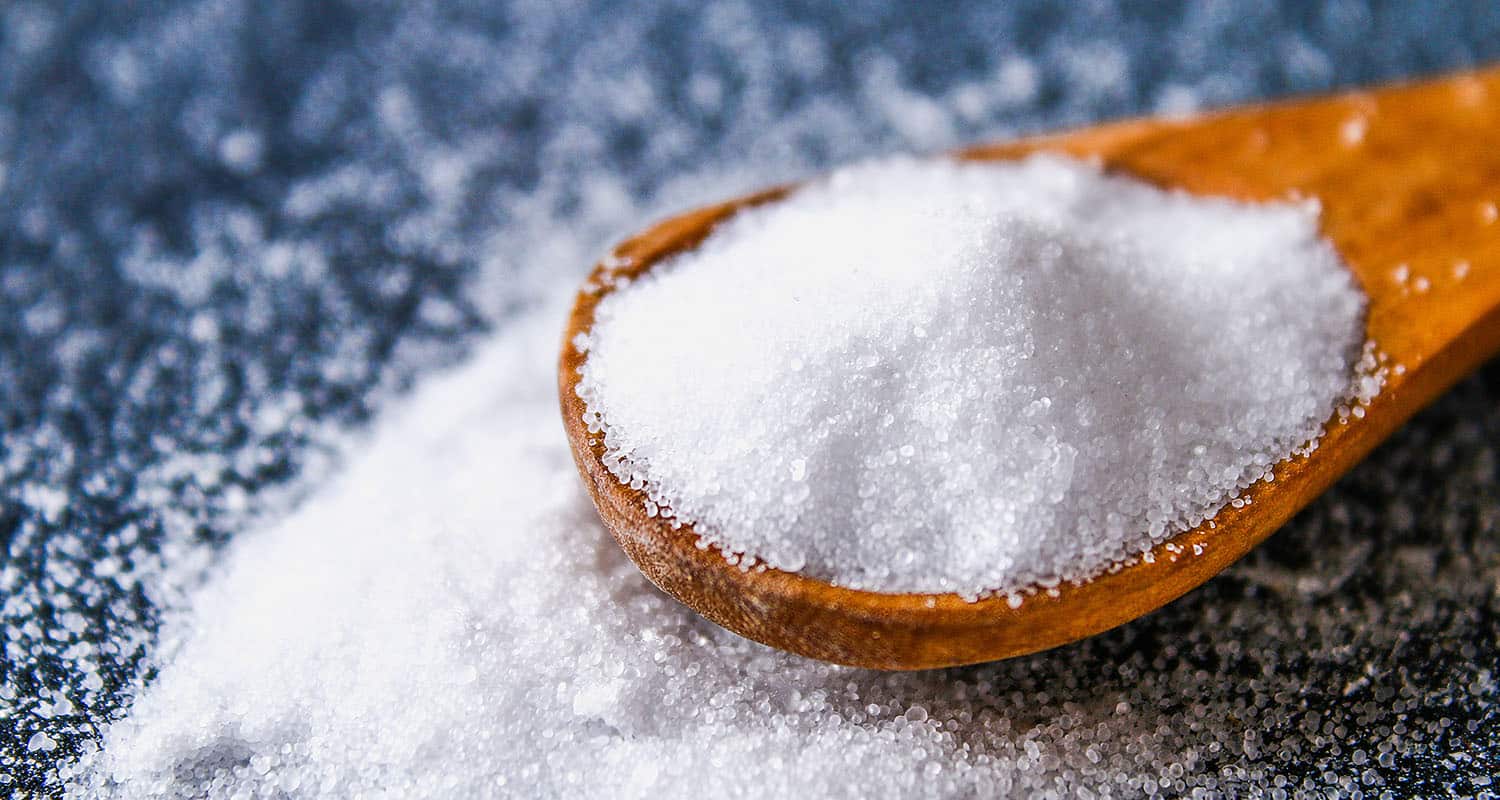 Ketone salts are ketone bodies, bound to a mineral: calcium, sodium, or magnesium.
Ketone salts are ketone bodies, bound to a mineral: calcium, sodium, or magnesium.
Usually, you’ll find that manufacturers’ ketone body of choice is BHB, because it is more stable than AcAc, and because BHB is the ketone most available in the bloodstream when you’re naturally in deep ketosis.[ref url=”https://www.ncbi.nlm.nih.gov/pubmed/16848698″]
Ketone salts were the first type of exogenous ketone available to the public. Early on, the keto community jumped all over the opportunity to boost ketones with a supplement, not knowing that there are problems with ketone salts. The main issue here is that they’re not bioidentical, which means your body may not use them the same way that they would use ketones that you made on board.
Since ketone bodies are attached to a mineral, they generally taste better and are easier to mask with flavor than ketone esters. Ketone salts raise your blood ketones, but they don’t raise your ketones as efficiently as ketone esters do.[ref url=”https://www.ncbi.nlm.nih.gov/pmc/articles/PMC5670148/”] Plus, ketone salts are still new to the supplement game, so we’re still learning about the effects — good and bad.
Instead of attaching to a mineral, ketone esters are ketone bodies, usually BHB, bound to 1,3 butanediol, an alcohol molecule that chemists happen to use to make polyurethanes. By the time they get into your bloodstream, ketone esters are chemically the same as the ketones your body makes, so your body knows what to do with them. Research shows that ketone esters raise your blood ketones far more efficiently than ketone salts do.[ref url=”https://www.ncbi.nlm.nih.gov/pmc/articles/PMC5670148/”]
Being bioidentical is a huge plus, but there are a couple major drawbacks to ketone esters. From a practical standpoint, ketone ester supplements are expensive — you’ll pay about $5 a day. If you make it past the sticker shock, you still have to deal with the taste factor. The taste is rough, and I mean rough. Imagine knocking back a fruity cough syrup that morphs into grandpa’s moonshine as you swallow. It’s like that.
Companies started making “ketones” out of fruits, namely raspberries, that are supposed to make you lose weight. Save yourself time and frustration, and wipe raspberry ketones from your radar. They’re not real.
Raspberry ketones are lab-created[ref url=”https://link.springer.com/article/10.1007%2Fs00897960034a”] and not the same compound that your body recognizes or knows how to use. Plus, you need close to 100 lbs of raspberries to make one day’s worth of raspberry ketones. What a waste of delicious polyphenols.
If you tried raspberry ketones and your blood ketones went up, you’ve been duped. Some sneaky companies fake a rise in blood ketones by mixing MCT oil into their formula. The effect isn’t from raspberry ketones – it’s from the fat. More on why that works, coming up.
 There’s an easier way. You can raise your ketones, crush cravings, and shoot your energy through the roof with a hack that doesn’t involve taking shots that taste like disinfectant. Quite the opposite — you’ll look forward to your ketone hit every morning.
There’s an easier way. You can raise your ketones, crush cravings, and shoot your energy through the roof with a hack that doesn’t involve taking shots that taste like disinfectant. Quite the opposite — you’ll look forward to your ketone hit every morning.
I’m talking about Brain Octane Oil. Brain Octane Oil is a coconut-derived medium-chain triglyceride that bypasses normal metabolism steps and converts directly into ketones that your body can use right away. It’s made of triple-distilled caprylic acid, which is so efficient at producing ketones that it raises ketones four times faster than diet alone. A UCSD study found that the type of medium-chain triglyceride that caprylic acid raised ketones more efficiently than any other type of MCT,[ref url=”https://academic.oup.com/cdn/article/1/4/e000257/4555134″] and Brain Octane Oil is 100% caprylic acid.
Because Brain Octane Oil is a fat, your body recognizes it as food and your metabolism knows exactly how to use it to make ketones.
Since brain Octane Oil is made from coconuts, you don’t have to worry about possible adverse reactions from a lab-created substance. Even better, it’s flavorless, and you can blend it into a delicious Bulletproof Coffee to power up your day.
Can you get a ketone boost with regular MCT oil? If you’re following a keto diet to the letter and you wake up fasted and take a generic MCT oil, you might see a moderate elevation in ketones.
Stick with the good stuff, though. Brain Octane Oil is pure caprylic acid, so it produces ketones more efficiently than other fat sources. It’s so efficient that it works even if you’ve had some carbs the night before.
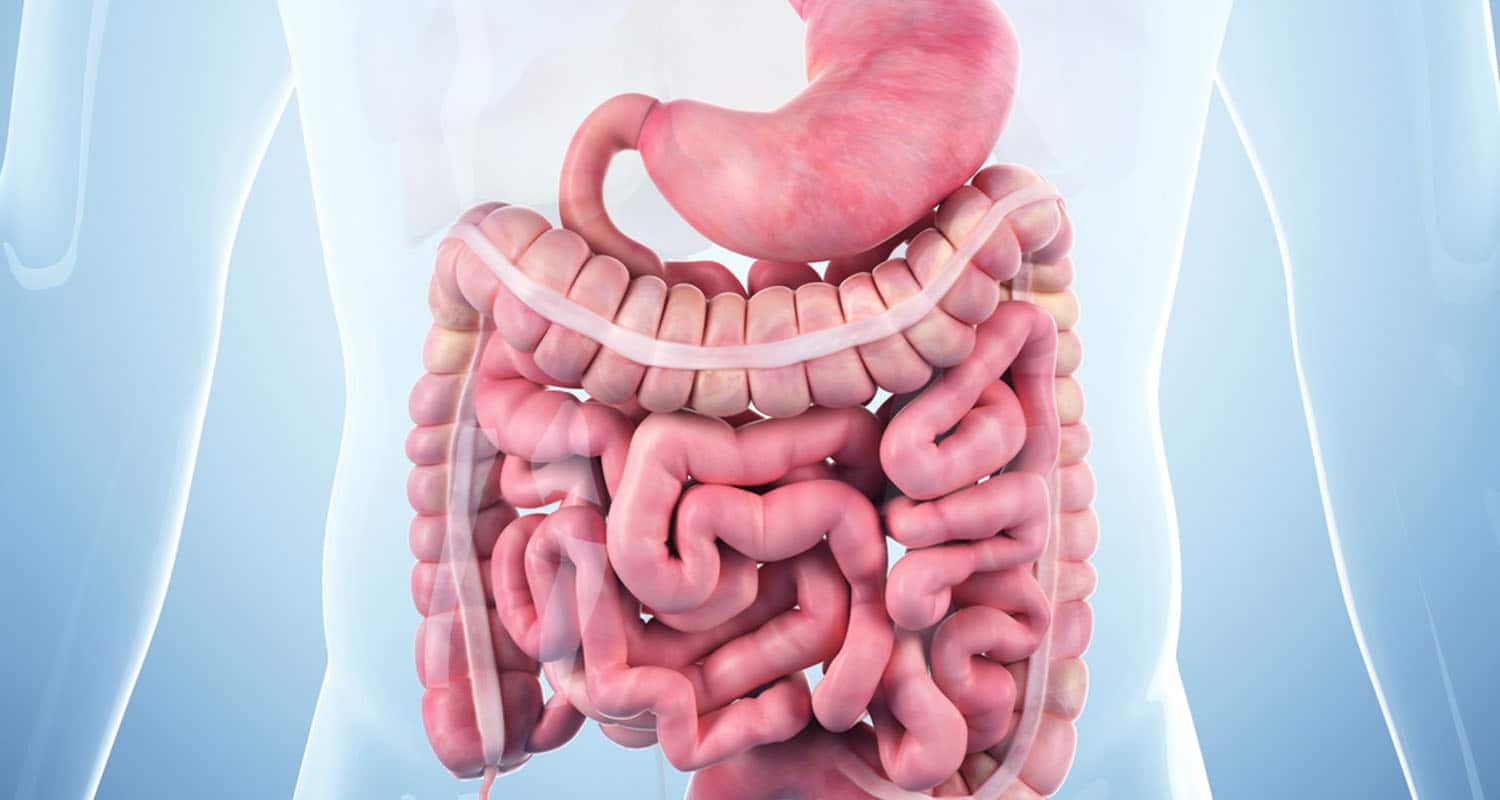 Technically, exogenous ketones can pump ketones into your bloodstream while you’re in the glycolytic (sugar-burning) state. But, is that a good idea?
Technically, exogenous ketones can pump ketones into your bloodstream while you’re in the glycolytic (sugar-burning) state. But, is that a good idea?
First, no situation in nature would make that happen. If you went back a few centuries to your hunter-gatherer ways, ketones and glucose wouldn’t course through your bloodstream at the same time. You’re built to fuel with sugar first, then with ketones when you’re all out of sugar.
Second, having carbs and exogenous ketones in your bloodstream at the same time will likely give you the same glucose and insulin spikes and crashes as you would have with a standard diet, and the resulting hunger and distraction you aim to avoid. Except this time, you have ketones in your blood, too. Since there’s glucose available, you won’t flip your switch to the fat-burning state because your metabolism uses glucose first. As for the extra ketones in your system, you’re flushing your expensive supplement down the toilet — literally.
If you have the choice, and you do, burn fat for energy.
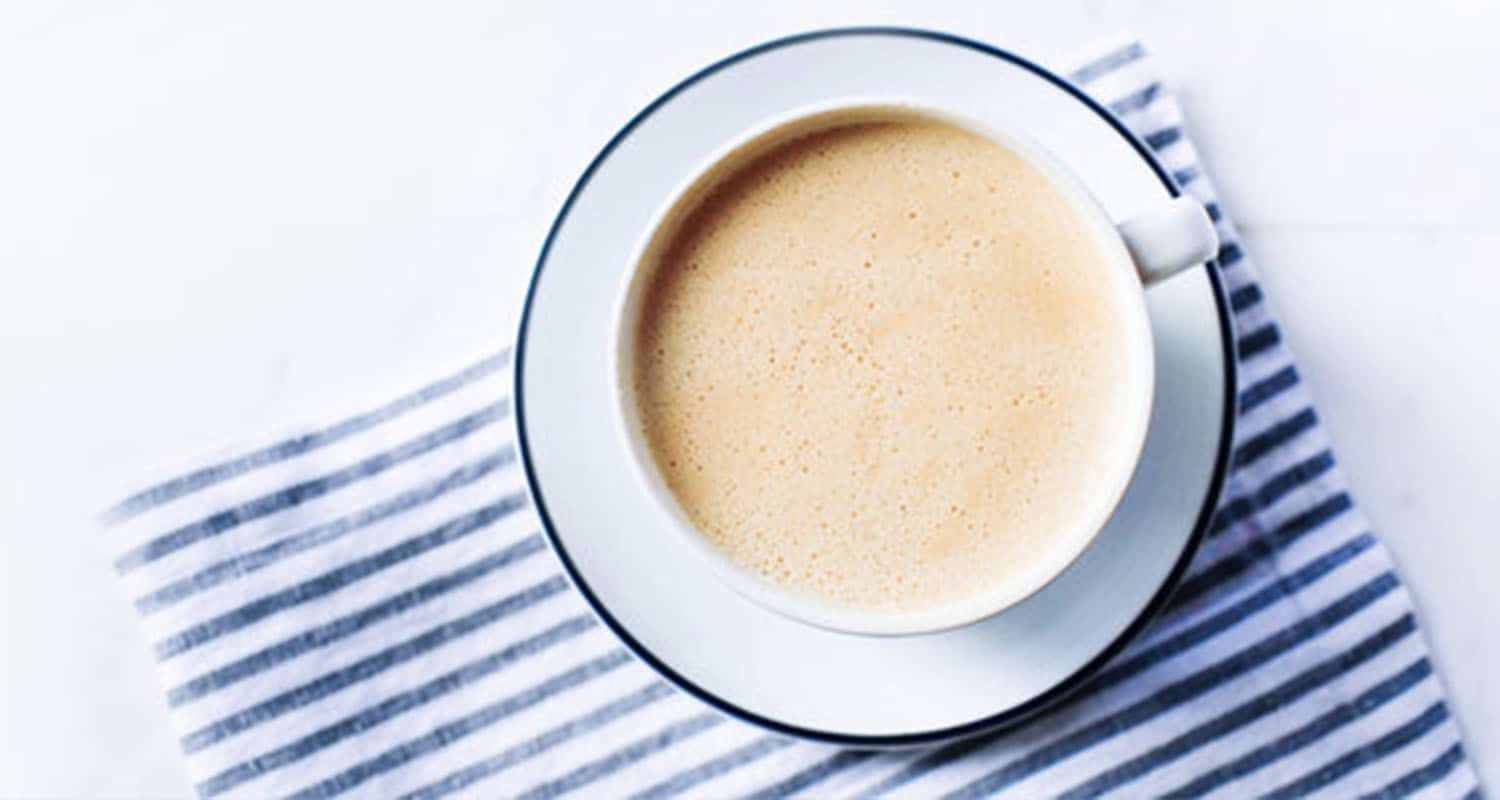 The transition to the fat-burning state is different for everyone. Things like your gender, age, your starting weight, your insulin sensitivity, and your body composition together determine how you react to carbohydrate restriction.
The transition to the fat-burning state is different for everyone. Things like your gender, age, your starting weight, your insulin sensitivity, and your body composition together determine how you react to carbohydrate restriction.
No matter who you are, you want to get to the other side as quickly as possible. Here’s how to get there without feeling hungry and slow.
If you follow these steps, you can shortcut right to the state of no cravings, intense focus, and incredible energy that you’ve been hearing all about. With the right tools and hacks at your disposal, you don’t have to suffer.
by Dave Asprey
And you thought there was no cure for a broken heart.
Scientists were able to repair tears in the hearts of mice using stem cells derived from the placenta.[ref url=”https://www.pnas.org/content/early/2019/05/14/1811827116″] A specific type of stem cell called Cdx2 cells selectively regenerated healthy heart cells, and restored the structure and function of the hearts of mice who had recently had heart attacks.
What’s particularly notable about this study is that it showed that Cdx2 cells were able to fly under the radar of the immune system, so the stem cells were not attacked as invaders before they arrived at injury sites to repair tissue. They efficiently targeted and fixed areas of damage.
This is huge, and the scientific community hasn’t even scratched the surface of what’s possible with stem cells.
Cdx2 cells are the cells that give rise to the placenta, the organ that grows in the womb alongside the baby to provide the baby with oxygen and nourishment. Scientists previously thought that Cdx2 cells were highly specialized and could only differentiate into placental cells, but this monumental study shows the potential for Cdx2 cells to grow other organs.
 You might remember my super intense head-to-toe stem cell treatment I underwent in Utah. You can get a sneak peek into the procedure in this video.
You might remember my super intense head-to-toe stem cell treatment I underwent in Utah. You can get a sneak peek into the procedure in this video.
My heart and organs are fine, so why did I do it? In short, when I’m old, I don’t want to feel old. I intend to move and think like I do today, even when I’m 100 and beyond. I follow the Bulletproof Diet as the foundation for that, and I add in other treatments to stay young, like cryotherapy, hydrogen therapy, PEMF, ozone therapy… the list goes on. Stem cell treatments are another avenue to stay young.
RELATED: How Adult Stem Cells Stop Pain and Reverse Aging
Stem cells seem advanced and expensive, and even controversial. If you look at the history of stem cell treatments, you can see that that’s changing. It wasn’t long ago that you had to pack up your life savings and go overseas to get stem cells. Now, you have your pick of stem cell centers in the states.
And, you can get treatments for a few thousand dollars. It’s still pricey, but not crazy expensive like it used to be. As more and more clinics open, competition will increase and costs will fall even further, and as research develops, we’ll probably see more stem cell procedures being covered by insurance.
The body of knowledge around stem cells increases every day, and there’s no doubt you’re going to see a wider and wider range of stem cell applications as scientists learn more about their capabilities. We’re truly living in exciting times.
by Dave Asprey
[tldr]
[/tldr]
Another week, another study scrutinizing the safety of eggs. This time, the news is good: Eggs, and dietary cholesterol, do not increase your risk of stroke.
The report, published in the American Journal of Clinical Nutrition, looked at the health habits of 1,950 Finnish men aged 42 to 60. During a 21-year followup, 217 of the men had strokes.
The study found that the men who ate less than two eggs a week were at no higher risk of stroke than those who ate more than six. The same was true for dietary cholesterol. Men who consumed 333 milligrams of cholesterol a day saw no difference in risk than those who had more than 459 milligrams a day. One large egg has 186 milligrams of cholesterol, according to the USDA’s National Nutrient Database.
There was also no increased risk in carriers of the APoE4 phenotype, who absorb cholesterol more effectively[ref url=”https://www.ncbi.nlm.nih.gov/pubmed/11726725″].
Related: New Study Claims Eggs Causes Heart Disease. Here’s What it Gets Wrong
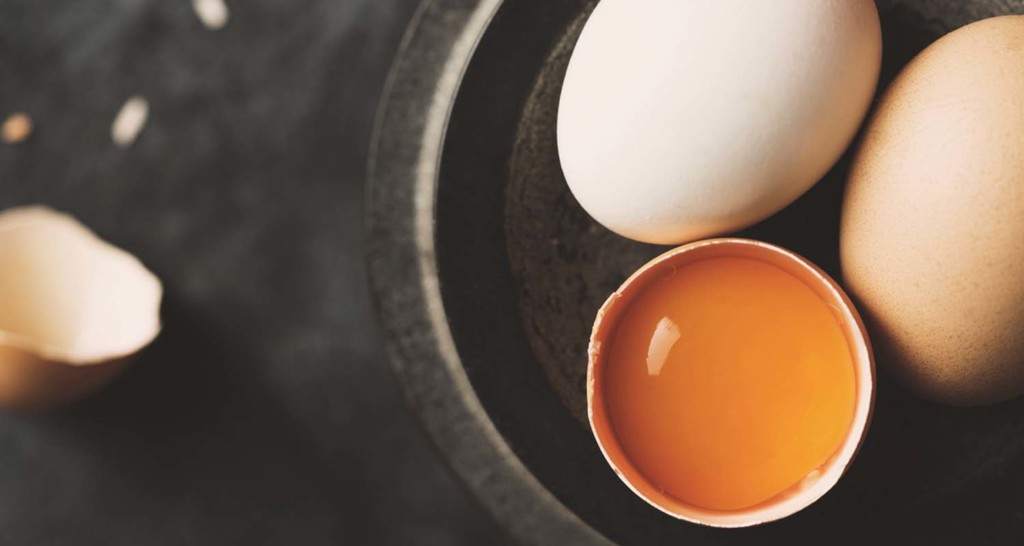
Eggs are a big part of the Bulletproof Diet. They’re loaded with vitamin D, protein, choline, omega-3s, and more. But where your egg comes from, and how you cook it, matters. Follow these guidelines to get the most out of your next scramble:
Read next: Everything You Know About Cholesterol Is Wrong
by Dave Asprey
In this episode of Bulletproof Radio, Dave is live at PaleoFX with Nora Gedgaudas, an internationally acclaimed keto and ancestrally based nutrition specialist and author who has dedicated her career to combating “diseases of civilization,” such as cancer, metabolic disorders, mood disorders, and cognitive decline.
Known as one of the early adopters of the low-carbohydrate, high-fat diet, Nora combines extensive research with evolutionary physiology, biochemistry, metabolism, nutrition, and chronic and degenerative disease for mind-body health and longevity.
Frustrated with what she’s seen happening within the paleo and ketogenic movements, she created her own term: Primalgenic®. Her newest work is based on 12 pillars, in which she’s combined more than two decades of knowledge of our ancestral roots and modern science to create an optimized nutritional approach to health and well-being.
Nora’s combined areas of expertise include being a Nutritional Therapy Practitioner, a board-certified Holistic Nutrition consultant, a board-certified clinical Neurofeedback Specialist, and a Certified Gluten Practitioner. She maintains a private practice in Portland, Oregon.
From food label laws to interesterified fat to “settled” science and angry vegans, you don’t want to miss this episode. (And don’t miss Nora’s guest column on the Bulletproof Blog.)
Enjoy the show!
Under Attack: The Evolution of Ancestral Nutrition – Nora Gedgaudas #594
The Primalgenic® Plan: A Three-Week, Meal-By-Meal Total Health Transformation.
Website: primalcourses.com
Website: primalbody-primalmind.com
Website: northwest-neurofeedback.com
Facebook: facebook.com/primalnora
Twitter: @NoraGedgaudas
Instagram: @noragedgaudas
YouTube: youtube.com/primalbodyprimalmind
Primal Body Primal Mind Blog: primalbody-primalmind.com/blog/
Bulletproof Radio: Nora Gedgaudas: Food For Consciousness – #136
Go check out “Game Changers“, “Headstrong” and “The Bulletproof Diet” on Amazon and consider leaving a review!
If you like today’s episode, check us out on Apple Podcasts at Bulletproof.com/iTunes and leave us a 5-star rating and a creative review.
by Team Asprey
Today, we welcome internationally acclaimed keto and ancestral nutrition specialist Nora Gedgaudas, CNS, NTP, BCHN as a guest author on the Bulletproof Blog. You can listen to her chat live with Dave at PaleoFX on this episode of Bulletproof Radio (iTunes).
by Nora Gedgaudas, CNS, NTP, BCHN
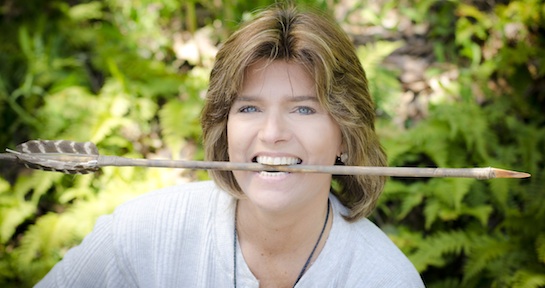
After experiencing detrimental health and mental health effects from my own foray into veganism, I became determined to find out what foods worked best for my biology.
My interests ultimately shifted toward studying the foundational roots of prehistoric ancestral diets, along with the various selective pressures that served to shape our physiological makeup and most basic nutritional requirements as humans. I sought to answer the question: Is human health enhanced or best supported by a strictly (or mostly) herbivorous diet?
Keep reading to find out how I found veganism, why I gave it up, and how a close examination of the human ancestral diet over thousands of years helped me realize that my body’s cravings for animal products weren’t a personal failure — they were biological.
Instantly download the Bulletproof Diet Roadmap, your cheat sheet to finding out which foods work with your unique biology.
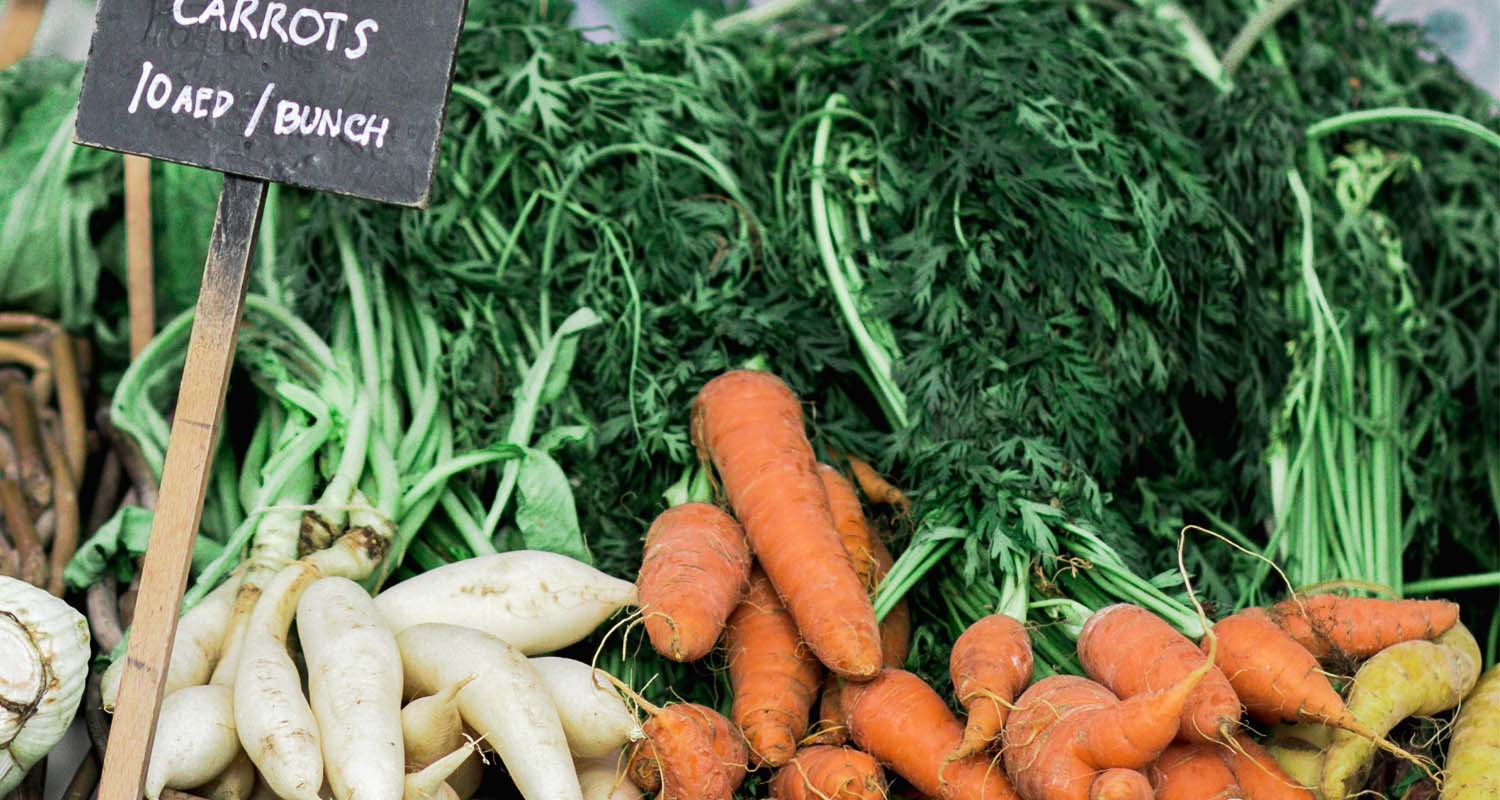 Around forty years ago, I bought into the mainstream perception that dietary animal fat was bad, and that animal source foods in general (especially red meat) should be consumed sparingly, if at all. Most of the propaganda in the health food stores I frequented in those days were rife with books and pamphlets on the many lofty virtues of vegetarianism and veganism as some established ideal.
Around forty years ago, I bought into the mainstream perception that dietary animal fat was bad, and that animal source foods in general (especially red meat) should be consumed sparingly, if at all. Most of the propaganda in the health food stores I frequented in those days were rife with books and pamphlets on the many lofty virtues of vegetarianism and veganism as some established ideal.
For a time, I fully attempted adopting these approaches in the best quality and strictest possible way, which resulted in a near catastrophic failure in my health and well being. What began with positive effects rapidly led over the course of a year or two to woefully diminishing returns. My struggles with depression deepened to the point of near suicidality, and I even developed an eating disorder for a time. For the first time, I began experiencing panic attacks. What started out as some potentially positive early detoxification effects eventually gave way to a complete loss of vitality and mental clarity.
RELATED: Things You Should Know Before Going Vegan
Persistent cravings for animal source foods left me feeling guilty. I felt like a complete failure when I finally succumbed to those cravings. Eventually, I abandoned what was then my ideal for what I begrudgingly had to concede worked far better for me. I automatically assumed the fault lay with some odd abnormality in my biochemical makeup or perhaps just an intrinsic weakness of my own self-discipline and character. I struggled internally with my failure. But I soon realized that this was faulty thinking.
 The vegetarian and vegan communities seem to be under the impression that our species has evolved from an herbivorous line, and that leaves and bananas are meant to be our most natural dietary staple. Conversely, nowadays meat eating is popularly perceived by many as being more of a modern-day aberration (or abomination, according to the most passionate proponents of the vegan diet).
The vegetarian and vegan communities seem to be under the impression that our species has evolved from an herbivorous line, and that leaves and bananas are meant to be our most natural dietary staple. Conversely, nowadays meat eating is popularly perceived by many as being more of a modern-day aberration (or abomination, according to the most passionate proponents of the vegan diet).
The only problem with this notion is that our closest great ape ancestors never quite got that memo. It turns out that all great apes (with one notable exception) regularly hunt, kill and consume some meat (comprising up to 20% of their diets).[ref url=”https://books.google.com/books?hl=en&lr=&id=weoc7eW9kCIC&oi=fnd&pg=PP17&dq=Stanford,+Craig+B.+%22The+Hunting+Apes:+Meat+Eating+and+the+Origins+of+Human+Behavior.%E2%80%9D++Princeton+University+Press+(February+25,+2001)&ots=qNqibQ1OO_&sig=rgfZp7fgqGIHKq1BPzflgkuZcIA#v=onepage&q&f=false”] With a cursory search on YouTube, you’ll find a plethora of very strong and difficult to watch footage clearly showing just that.
 Some attribute cooking as the practice that made us human. Others say it was our increased consumption of starchy roots and tubers (much less grains or legumes) along the way. The most impactful practice that led to the brain architecture and capacity that we have today was our consistent consumption of the dietary fat of animals.
Some attribute cooking as the practice that made us human. Others say it was our increased consumption of starchy roots and tubers (much less grains or legumes) along the way. The most impactful practice that led to the brain architecture and capacity that we have today was our consistent consumption of the dietary fat of animals.
The notable exception to this meat-eating rule among our simian brethren includes herbivorous gorillas. The rub there is that these herbivorous gorillas also have a smaller brain-to-body ratio then would be expected for their size.[ref url=”https://onlinelibrary.wiley.com/doi/abs/10.1002/cne.21974″] In fact, a gorilla weighing about the same as a human has a brain just one-third of the size.
RELATED: What “The China Study” Gets Wrong About Vegan Diets
We can also turn to the chimpanzee for comparison. The size and sophistication of the chimpanzee’s brain really has not changed much at all in about seven million years. Why? In general terms, chimpanzees continued on to live as they always had, and kept persistently noshing on those leaves and bananas, along with the occasional meat of small and relatively lean animals. No real changes there.
Somewhere along the way, an intrepid primate ancestor began to do things a bit differently. Profound physiological changes, like the development of opposable thumbs, allowed them to more effectively cleave meat and marrow from the scavenged bones of animals. Eventually, they used new abilities, like the ability to grip and walk upright, to band together to hunt with the tribe, creating and grasping spears and other weaponry to hunt more efficiently.
 Around 2 million years ago, we first emerged as the genus, ‘Homo’, standing fully upright and having by then established a fully hunting-based dietary economy.[ref url=”https://journals.plos.org/plosone/article?id=10.1371/journal.pone.0062174″][ref url=”https://onlinelibrary.wiley.com/doi/abs/10.1002/%28SICI%291520-6505%281999%298%3A1%3C11%3A%3AAID-EVAN6%3E3.0.CO%3B2-M”] By this time, our brains were already double to triple that of our closest primate ancestor (the chimpanzee). From there, our hominid brain nearly doubled again by roughly 200,000 years ago when we finally emerged as Homo sapiens for the first time.[ref url=”https://www.jstor.org/stable/41464021?seq=1#page_scan_tab_contents”]
Around 2 million years ago, we first emerged as the genus, ‘Homo’, standing fully upright and having by then established a fully hunting-based dietary economy.[ref url=”https://journals.plos.org/plosone/article?id=10.1371/journal.pone.0062174″][ref url=”https://onlinelibrary.wiley.com/doi/abs/10.1002/%28SICI%291520-6505%281999%298%3A1%3C11%3A%3AAID-EVAN6%3E3.0.CO%3B2-M”] By this time, our brains were already double to triple that of our closest primate ancestor (the chimpanzee). From there, our hominid brain nearly doubled again by roughly 200,000 years ago when we finally emerged as Homo sapiens for the first time.[ref url=”https://www.jstor.org/stable/41464021?seq=1#page_scan_tab_contents”]
This rapid rate of brain enlargement and sophistication, aka encephalization, is wholly unprecedented among the evolutionary lineages of any other species. What is also unique about us as human primates is our additionally unprecedented taste for fat — particularly animal fat — which we pursued voraciously along the way.[ref url=”https://www.journals.uchicago.edu/doi/abs/10.1086/soutjanth.25.4.3629426″] We had available to us the meat of massive, fatty herbivores we now refer to as megafauna all the way from 2.6 million years ago—at the outset of the Quaternary Ice Age all the way to 13,000 or so years ago.
And this, more than any other single factor, has led to what is arguably our most unique and defining human characteristic: our unusually large brain. And unlike any other primate, the fatty acids responsible for our unique human cognition — both 20- and 22-carbon fatty acids: arachidonic acid (AA) and docosahexaenoic acid (DHA)—are both found within the human food supply exclusively within animal source foods.[ref url=”https://www.ncbi.nlm.nih.gov/pubmed/1608562″]
It is the effect of dietary fat on brain growth that we have to thank for advanced human achievement: art, poetry, music, culture, mathematics, language, literary works, science and technology, and arguably even human spirituality. And it’s worth pointing out that we didn’t require fire in order to make excellent and consistent dietary use of that precious dietary commodity. We are meant as humans first and foremost to be fat-heads, not potato heads or grain brains.
 The cataclysmic birth of the Holocene tragically led to the sudden mass extinction of more than half of the planet’s megafauna species (particularly the largest and fattiest of them), leaving us with much smaller, leaner prey that was much more fleet of foot. Even so, our Neolithic hunting ancestors never lost their preference for animal fat as their most coveted dietary staple.
The cataclysmic birth of the Holocene tragically led to the sudden mass extinction of more than half of the planet’s megafauna species (particularly the largest and fattiest of them), leaving us with much smaller, leaner prey that was much more fleet of foot. Even so, our Neolithic hunting ancestors never lost their preference for animal fat as their most coveted dietary staple.
Nevertheless, the advent of agriculture (and a diet increasingly based upon sugars, starches, and grains) has led not to any continued brain enhancement and evolution, but instead a loss of close to 11% of our brain volume over the last 10,000 years.[ref url=”https://link.springer.com/referenceworkentry/10.1007%2F978-3-642-39979-4_81″][ref url=”https://www.jstor.org/stable/41464021?seq=1#page_scan_tab_contents”] Let’s just say that evolution has not continued in quite the direction we might have hoped, or as is popularly advertised.
 An adult human brain utilizes an estimated 20-30% of our total human caloric energy demand,[ref url=”https://www.sciencedirect.com/science/article/pii/S1550413111004207″] making it very, very expensive in energy terms. A baby’s brain requires closer to 85% of total energy, the brains of young children require 45-50% of total energy. For perspective, consider that the brains of other primates use no more than about 8% of their total caloric energy demands.
An adult human brain utilizes an estimated 20-30% of our total human caloric energy demand,[ref url=”https://www.sciencedirect.com/science/article/pii/S1550413111004207″] making it very, very expensive in energy terms. A baby’s brain requires closer to 85% of total energy, the brains of young children require 45-50% of total energy. For perspective, consider that the brains of other primates use no more than about 8% of their total caloric energy demands.
Fat supplies more than twice the caloric value of glucose, and in the form of ketones, can supply literally FOUR times the energy!
As understood by most anthropologists today, it was likely our dependence on the meat, and especially fat, of the animals we hunted that not only allowed us to survive, but to develop the structure and function of the human brain.
The fact is, compared to large-bodied apes, we humans have an enhanced capacity and a fundamentally optimized physiology toward digesting and metabolizing higher animal fat diets. We are unique among all animals in our capacity of our brains to make full time use of almost nothing but ketones, full time. I think we need to view this as a significantly meaningful adaptation. Without it, our species could not have evolved such large brains.[ref url=”https://www.ncbi.nlm.nih.gov/pubmed/12813917″]
Stay tuned for Part 2, where we dig into the human digestive system and the guts of our primate ancestors. Read more from Nora at her web site, Primal Body, Primal Mind.

Subscribe to become an “Insider”, and receive weekly biohacking tips and tech directly from Dave to start hacking your way to stronger mental performance and physical results.
Receive weekly biohacking tips and tech by becoming a Dave Asprey insider.